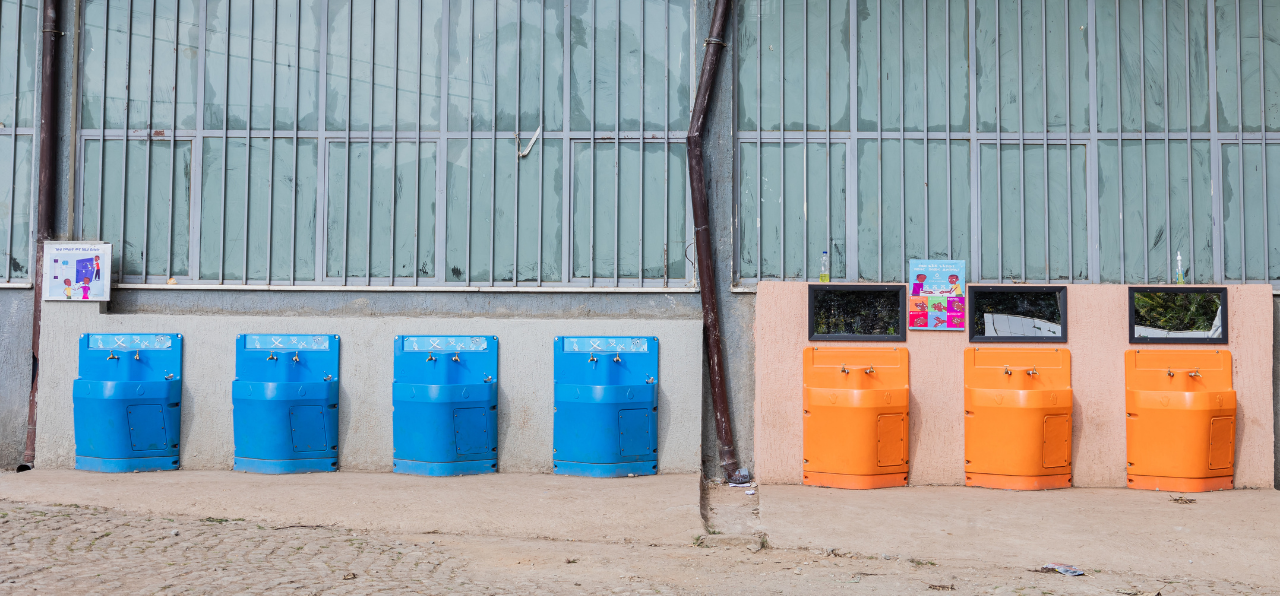638,000 children will be served daily by 2030
Project Stats
START DATE
December 2025
SCALE & SCOPE
312 schools
TARGET POPULATION
638,582 children
IMPLEMENTING PARTNER
BORDA Zambia
ESTIMATED COMPLETION
2029
STRATEGIC EXIT
2030

638,000 children will be served daily by 2030
Zambia sits at the crossroads of East, Central, and Southern Africa. It is among the safest and most politically stable countries on the continent, and one of Sub-Saharan Africa’s most urbanized populations: 40% of Zambians live in a city. However, unemployment and underemployment are serious problems in urban areas, and across the country, 64% of Zambians live on less than USD 2.15 per day. This high poverty rate is coupled with inadequate water and sanitation services. About a third of households lack “basic water access,” while nearly two-thirds of households lack basic sanitation services. As a result, children are at higher risk for malnutrition and waterborne illnesses, and public health crises like cholera outbreaks are common. With its strong institutions and committed government, Zambia is poised to meet these challenges and deliver significant improvements at scale.
21,548,000
Zambia’s school enrollment is expected to reach 8 million by 2035—up from 4.8 million in 2021.
Every public school in Kitwe, Lusaka, and Ndola
December 2025
312 schools
638,582 children
BORDA Zambia
2029
2030
332,808
153,235
177,539
Zambia is ready to transform its limited WASH infrastructure and services. The Zambian government has made WASH-M a priority, established national standards and guidelines, and is focused on its public schools.
Zambia recently enacted an Education for All policy that has led to a surge in school enrollment—expected to rise from 4.8 million in 2021 to 8 million by 2035. That increase has also resulted in considerable pressure on existing WASH facilities, most of which are not adequately inclusive. In Kitwe, for example, the ratio of students per toilet is already ten times higher than WASH guidelines prescribe, and only a quarter of schools have at least one facility for menstrual health management. Class size has grown from 35 students three years ago to 120 students per classroom today.
Given these conditions, implementing a WASH-M in schools program will significantly improve educational, health, and economic outcomes. With the enthusiastic support from the government and the strong institutions already in place, Zambia is ready.
Over the past year, Splash has laid the groundwork for a collaborative partnership with the Zambian government and civil society leaders. Following a robust feasibility study, we chose to focus on Kitwe, Ndola, and Lusaka.
Our goal is to reach 100% coverage of all 312 public schools in the three largest cities by 2029.
We’ll break ground on WASH infrastructure in our first round of schools by December 2025.
Our projects in Zambia are the start of Project WISE: Phase II. Our approach builds on lessons learned from Phase I in Addis Ababa and Bahir Dar, Ethiopia, and in Kolkata, India, over the past five years.
Our biggest innovation: local co-ownership from the very beginning. We know that’s the key to long-term impact and lasting systems change. We’re doubling down on our strategy to strengthen government policies, standards, and relationships at every level, from government agencies to school administrations. We’re also engaging local NGOs and businesses to tap into local leadership and build a foundation of trust within schools’ social ecosystem. And soon we’ll be able to announce the Zambian partner organizations who will be implementing this project alongside us.
We know this is going to be a learning experience for Splash and our partners—and it’s going to deliver a stronger, more adaptable model that can solve the water crisis for millions more kids.
Splash’s work in Zambia builds on our track record of impact across 8 countries where our projects serve more than 1.1 million kids daily. Learn more here.